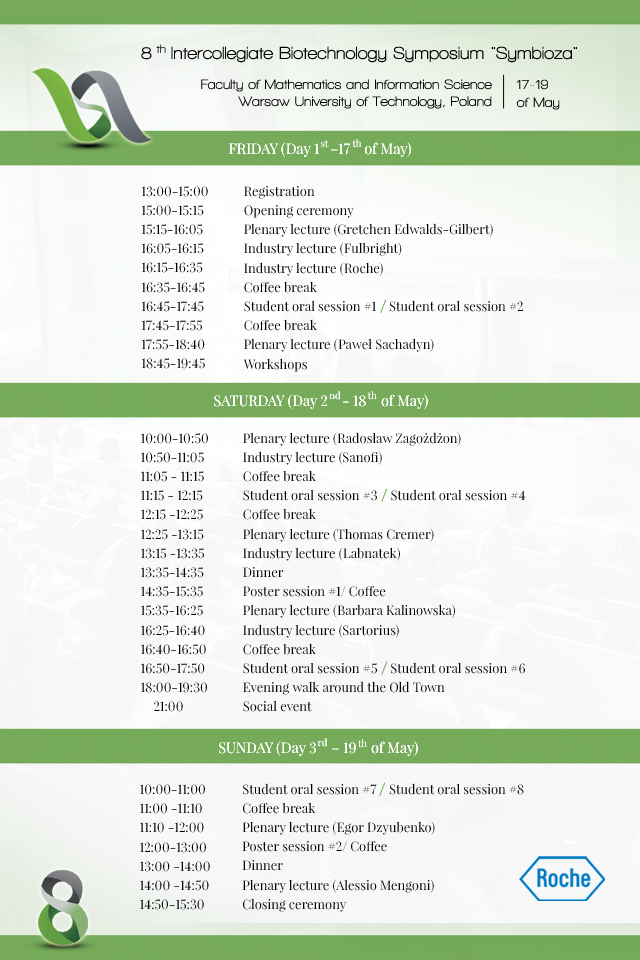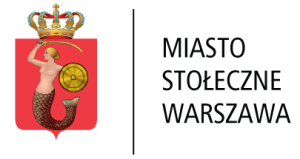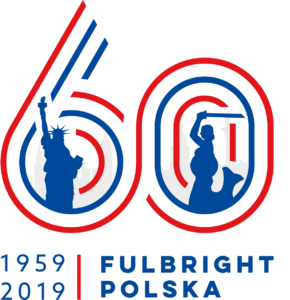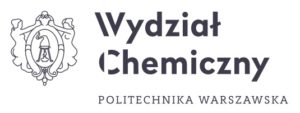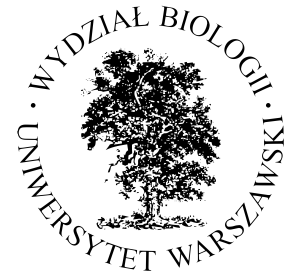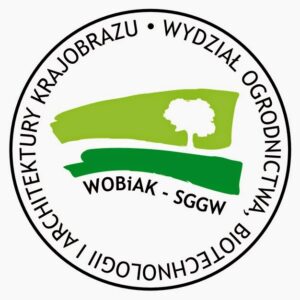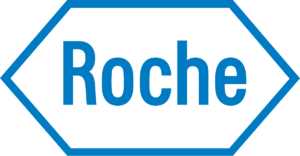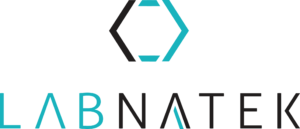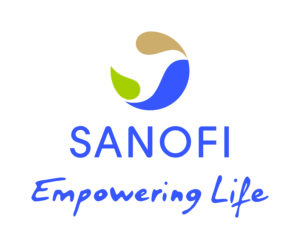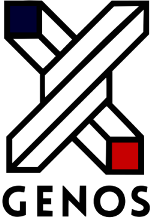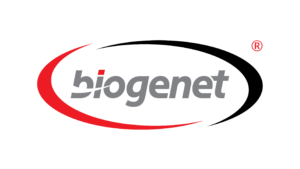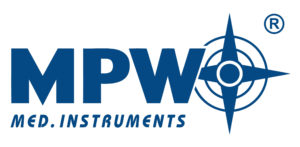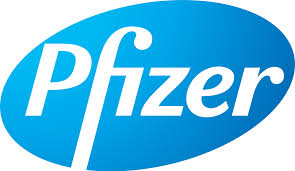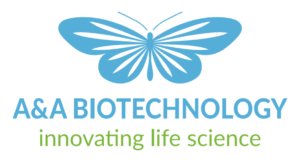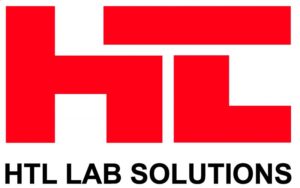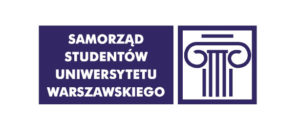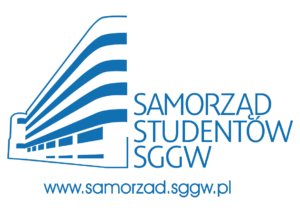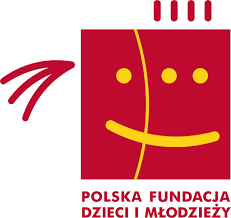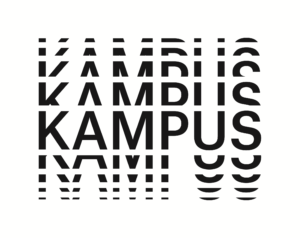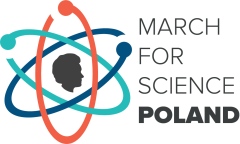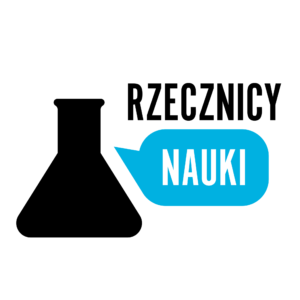Edition 2019
 We have the greatest pleasure to announce that 8th edition of Intercollegiate Biotechnology Symposium ‘Symbioza’ was a huge success thanks to everyone involved!
We have the greatest pleasure to announce that 8th edition of Intercollegiate Biotechnology Symposium ‘Symbioza’ was a huge success thanks to everyone involved!
Biotechnology is a wide area of science that tackles problems and topics from current research on biology, genetics, chemistry and environment etc. IBS ’Symbioza’ accomplished gathering young enthusiasts and researchers-to-be and gave them possibilities to spread knowledge and share experiences among participants.
We were honored both by polish and foreign guest lecturers from renown science institutes, who by giving a small amount of their time managed to inspire and motivate the participants of the conference.
Plenary lectures were given by:
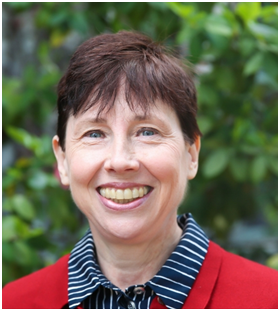 |
Prof. Gretchen Edwalds-GilbertClaremont McKenna College, Pitzer, and Scripps Colleges in California, USA Keynote lecture, Friday 15:15 |
» show more info
Prof. Gretchen Edwalds-Gilbert is currently a Fulbright Scholar at the University of Warsaw Institute for Genetics and Biology; she is an Associate Professor of Biology at Claremont McKenna, Pitzer, and Scripps Colleges in California. She completed her Ph.D. at the Weill Medical College of Cornell University in New York City, and did post-doctoral research at the University of Pittsburgh School of Medicine and the Beckman Research Institute of the City of Hope in Duarte, California. Dr. Edwalds-Gilbert is a member of the Council on Undergraduate Research (CUR) and serves as a CUR Councilor for the Biology Division. In her own molecular biology lab, she has supervised 58 undergraduates, many of whom are from groups underrepresented in science.
In her research, Dr. Edwalds-Gilbert focuses on the regulation of gene expression under stress response, and she has received funding from the Keck Foundation and the Howard Hughes Medical Institute for this work. Cells encounter stress through their interactions with the environment and either respond successfully, maintaining homeostasis, or do not, leading to cell death. Changes in gene expression critical to resolving the stress response are regulated at many stages, including gene transcription, pre-mRNA alternative processing, mRNA modification, transport, and translation. Regulation of translation after stress exposure is associated with many diseases, including cancer, and is also relevant to environmental stresses organisms face with climate changes.
» hide bio
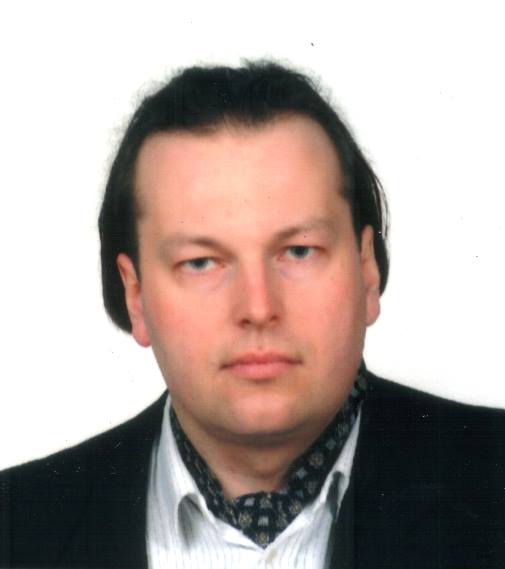 |
Dr. Paweł SachadynGdańsk University of Technology, Poland Keynote lecture, Friday 17:55 |
» show more info
Paweł Sachadyn completed his PhD dissertation at the Faculty of Chemistry of the Gdansk University of Technology in 2000. He carried out several research projects in the field of molecular biotechnology and molecular diagnostics. One of the principle directions of his work was concentrated on the application of MutS protein as a tool for the analysis of mutations and pre-mutational changes in DNA. From 2005 to 2008, as a fellow of the Foundation for Polish Science, he conducted the studies on mammalian regeneration in the Wistar Institute in Philadelphia. Further, he developed his research towards the molecular basis of mammalian regeneration with particular regard on its epigenetic aspects. From 2014 to 2018, he participated in the REGENNOVA programme on novel technologies for pharmacological stimulation of regeneration as one of project leaders. He was promoted to the rank of Associate Professor of the Gdańsk University of Technology in 2015. In 2017, he became the head of the Laboratory for Regenerative Biotechnology. Dr. Sachadyn believes that human genome contains complete information that defines the structure and functions of organisms and that silencing of developmental genes is responsible for the decline of regenerative abilities in adult mammals. This assumption led him to the hypothesis that temporary reversal of the epigenetic repression was possible to enhance healing potential. Dr. Sachadyn and his research group work to delineate novel strategies of regenerative medicine based on the pharmacological activation of endogenous regenerative potential using innovative epigenetic therapies.
» hide bio
 |
Dr. Radosław ZagożdżonMedical University of Warsaw, Poland Keynote lecture, Saturday 10:00 |
» show more info
Radosław Zagożdżon (M. D. PhD) graduated from Faculty of Medicine at Medical University of Warsaw (WUM) in 1996. In 1998 he received medical doctor degree (M. D.) at Center for Biostructure Research WUM.
Between 2000-2005 he worked as a postdoctoral fellow and an instructor at Beth Israel Deaconess Medical Center in clinical hospital Harvard Medical School in Boston, USA. During the next years he was a postdoctoral fellow and lecturer at the University College Dublin in Irleand. He was a preincipal investigator in the BASTION project. He also conducted research founded by National Science Centre (Poland). In 2016 he obtained degree of DSc (habilitation).
From the begining of 2017 dr Radosław Zagożdżon has been a head of the Departament of Immunology, Transplantation Medicine and Internal Diseases, Transplantation Institute WUM, where he also works as a physican. He is a scientific consultant in the Faculty of Bioinformatics at Institute of Biochemistry and Biophysics (Polish Academy of Science).
Dr Zagożdzon is interested in experimental oncology, tumor immunology and immunotherapy. In his research work, he is mainly focused on examining homeostasis of redox-states in tumor and immune cells, particulary natural killer (NK) cells. The aim of his project is to evaluate the role of the specific antioxidative enzymes systems in cell growth and survival, tumor cells resistance to chemotherapy and mechanisms of immune evasion in cancers.
» hide bio
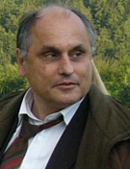 |
Prof. Dr. Med. Thomas CremerLudwig Maximilians University (LMU) Munich, Germany Keynote lecture, Saturday 12:25 |
» show more info
Thomas Cremer is Professor emeritus of Anthropology and Human Genetics at the Ludwig Maximilians University (LMU) in Munich (Germany). In the 1970s he pioneered approaches to study nuclear architecture using a laser-uv-microbeam (built with his brother, the physicist Christoph Cremer).
Together with his co-workers he established 3D FISH protocols for the visualization of DNA targets from genes to entire chromosome territories (CTs) combined with the immuno-detection of epigenetic markers. In addition to 3D-studies of nuclei in fixed cells, his group also developed methods to study the dynamics of entire CTs and chromatin domains in living cells. These studies revealed a higher order chromatin organization based on non-random 4D (space-time) higher order chromatin arrangements and led to new models of nuclear organization and function. By comparison of nuclear phenotypes in a variety of species, ranging from primates and other mammals, birds, hydra, as well as to the micro- and macronucleus of a ciliate species his group has attempted to
classify universally valid, species and cell type specific features of nuclear architecture in normal cell types as compared to disease correlated features in pathological cells.
» hide bio
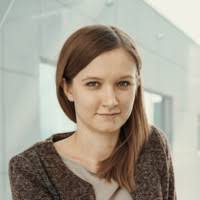 |
Dr. Barbara KalinowskaArdigen SA, Kraków, Poland Keynote lecture, Saturday 15:35 |
» show more info
Barbara Kalinowska is an experienced bioinformatician with a strong background in biophysics. She obtained her Ph.D. from the Jagiellonian Univerisity in the field of computational biology, specifically in the protein structure prediction. The research she performed during her doctoral studies resulted in several publications and was presented on international events. While the master studies, she gained also experience in the laboratory work and the research on the photodynamic therapy of cancer.
Barbara joined Ardigen at the beginning of 2017 and since then she has broadened her practical knowledge in the field of the modern genomics. She participated in several projects focused on topics like CNV detection, CRISPR/Cas9 screening or single-cell RNA-seq data analysis.
Ardigen provides analyses, tools and novel algorithms to life science companies which base their solutions on the most innovative technologies, particularly in the field of Next Generation Sequencing. Processing a large amount of multi-omics data and building tools supporting research requires combining expertise in bioinformatics with software engineering and data science skills. Ardigen aims to integrate knowledge from various domains to offer high-quality services in bioinformatics.
Selected real projects performed in Ardigen for global companies will be presented with the main focus on bioinformatical aspects. The examples will cover topics like CRISPR/Cas9 technology and single-cell RNA sequencing.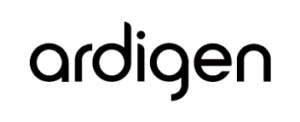
» hide bio
 |
Dr. Egor DzyubenkoUniversity Hospital Essen, Germany Keynote lecture, Sunday 11:10 |
» show more info
Egor Dzyubenko studied biology, biophysics and bionanotechnology at Lomonosov’s Moscow State University and received his diploma in 2011. His diploma thesis focussed on the dynamics of mitochondrial membrane potential during hyperglycaemic stress in cultivated neurons. He performed his PhD thesis at the Department of Cell Morphology and Molecular Neurobiology of the Ruhr University Bochum under the supervision of Prof. Dr. Andreas Faissner from 2012 until 2016. His thesis entitled ‘Modifying synaptogenesis and functional state of neural networks in vitro: insights from antipsychotic treatments and extracellular matrix depletion’ was awarded with the grade “with distinction”. Subsequently, he moved to the University Hospital Essen and joined the NeuroScienceLab within the Chair of Vascular Neurology, Dementia and Ageing Research in 2017.In his research he tries to find out an answer on the three main questions:
- What is the role of astrocytes, ECM and peri-neuronal nets for neuronal plasticity and neuronal network function?
- Can we modify neuronal networks exogenously, and how can patients with neurological diseases benefit from it?
- Which are the molecular signals that lead to neurological recovery?
To address these challenging tasks, he combines animal models and cell culture techniques, bridging structural histochemical and electrophysiological methods (e.g., Multi Electrode Arrays, MEA). Within his studies, he establishes cutting-edge superresolution imaging tools (STED, SIM, PALM) and evaluates neuronal connectivity by computational approaches.
» hide bio
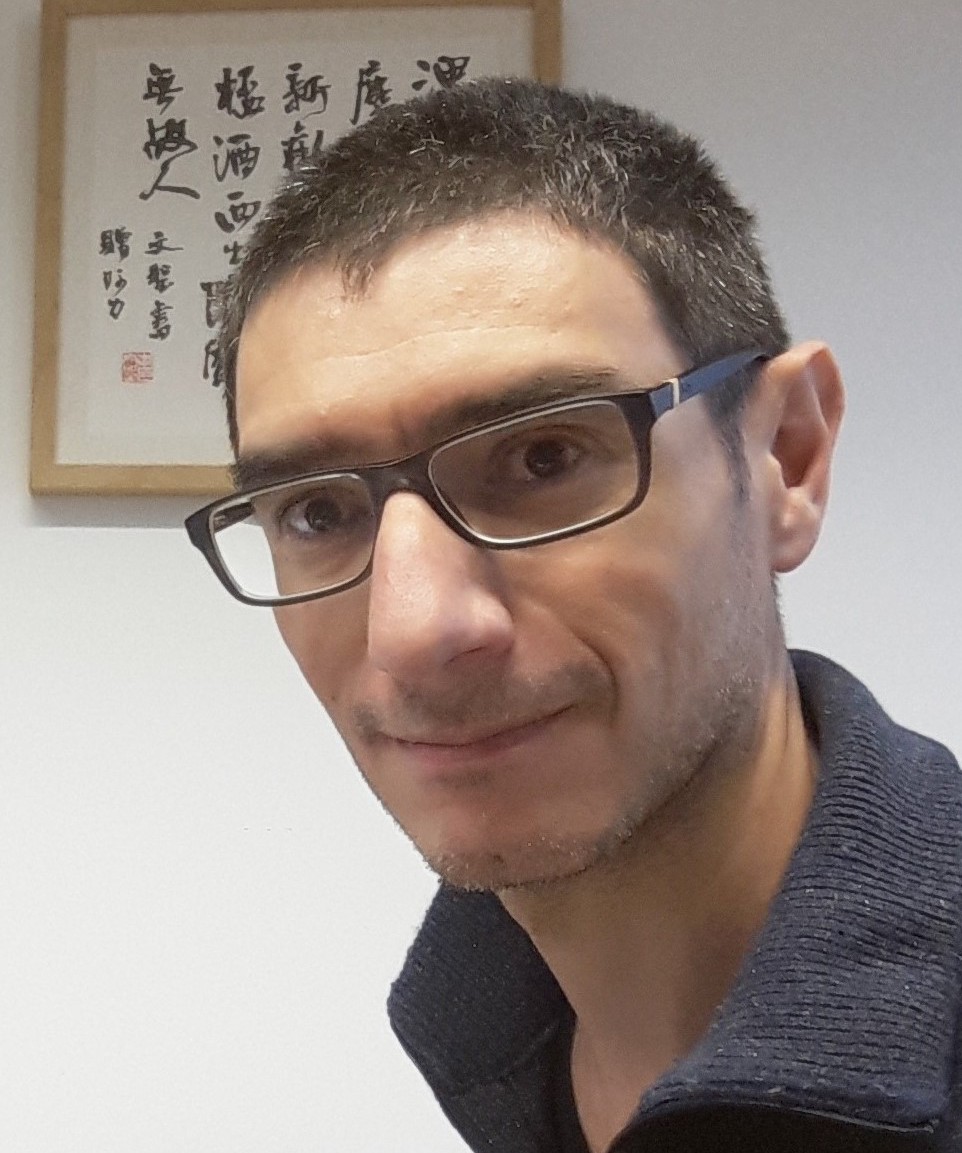 |
Prof. Alessio MengoniUniversity of Florence, Italy Keynote lecture, Sunday 14:00 |
» show more info
Alessio Mengoni obtained a PhD in Genetics from the University of Pavia (Italy) working on plant population genetics. Since more than 15 years he is interested in understanding the dynamics of symbiotic interactions between bacteria and plants, in particular from the point of view of bacterial genome evolution and biotechnology. He applies metagenomic and computational biology approaches to study the diversity, dynamics and functions of microbial communities, with special attention to host-associated microbiomes. He is co-founder of a spin-off company (EcolGene S.r.l.) devoted to environmental microbiology analyses.
Alessio is professor of genetics at the University of Florence and visiting professor at the Intecollegiate Faculty of Biotechnology, University of Gdansk, Poland and at the School of Life Science, Sun Yat-sen University, Guangzhou, P.R. China.
Personal page https://www.bio.unifi.it/cmpro-v-p-160.html
» hide bio
Programme of VIII Edition ISB “Symbioza”
Oral student presentations
32 student presented their research during 8 sessions (two sessions were taking place simultaneously in one time slot).
» See full presentation list
Session 1: Let the cat out of the bag
Agnieszka Chlebicz: Effect of sows feed supplementation with novel synbiotics on faecal concentrations of lactic acid and short-chain fatty acids
Grzegorz Suwala: Sex chromosomes in lacertid lizards: high stability in spite of reported variability
Alicja Nowacka: Interaction of serum-derived and internalized C3 with DNA in human B cells – a potential involvement in regulation of gene transcription
Aleksandra Fesiuk: Dysregulated miRNA in human plasma as potential biomarkers in Alzheimer’s disease
Session 2: A prescription for transcription
Igor Grochowina: The interaction of Hsp70/Hsc20 chaperones with folded protein substrate.
Piotr Soczewka: Yeast-model-based study identified myosin- and calcium-dependent calmodulin signalling as a potential target for drug intervention in chorea-acanthocytosis
Marcin Lipiec: The transcription factor TCF7L2 confers and maintains postmitotic neuronal identities in vertebrate thalamus and habenula.
Klaudia Peczyk: Analysis of HvTIP1;1 gene expression coding for aquaporin in barley (Hordeum vulgare L.) after treatment of seedlings with compounds inducing oxidative stress
Session 3: How to cancel the cancer?
Malwina Sosnowska: Fullerenes triggered G2/M-phase arrest of liver cancer cells by mechanotransduction towards membrane proteins, cytoskeleton and the nucleus
Żaneta Kałuzińska: The regulation of AP2-α transcription factor via WWOX protein and its influence in bladder carcinogenesis.
Łukasz Arcimowicz: Identification of molecular markers for detection and characterisation of single breast cancer circulating tumour cells in different epithelial-to-mesenchymal states
Maria Latacz: Rs10877012 polymorphism in CYP27B1 gene in women with diagnosed breast cancer: preliminary study
Session 4: ekoLOGIC
Joanna Jabłońska: Heavy metal tolerance in bacteria isolated from soil contaminated with polycyclic aromatic hydrocarbons (PAHs)
Anna Litwin: The study of the accumulation of insecticides and the impact on cell permeability in entomopathogenic fungus Beauveria bassiana
Mateusz Grzybowski: Investigation of diversity of bacterial microflora in the stratosphere
Justyna Kajdanowicz: Analysis of antibiotic resistance of Staphylococcus spp. strains isolated from pigs
Session 5: Bio ≤ Technology
Klaudia Arciszewska: Anti-lysine DNA aptamer – a novel tool for purification of recombinant proteins
Milena Stolarska: Structural pre-adaptation and episodic selection drove evolution of moonlighting activity of Hsp70 co-chaperone Zuotin
Witold Postek: Microfluidic screening of antibiotic susceptibility at the single-cell level
Marcelina Jureczko: Potential removal of cytostatic pharmaceuticals by Tritirachium album – sorption study
Session 6: Mystery of Biochemistry
Róża Szatkowska: What is the connection of tRNA synthesis with storage carbohydrates in Saccharomyces cerevisiae?
Małgorzata Milewska: Search for human proteins showing potential interactions with Toxocara canis CTL-1 antigen using yeast two hybrid system
Izabela Perkowska: Revealing the unknown. Discovering the biological function of selected plant UDPglucosyltransferases
Katarzyna Kluszczyńska: How not to purify exosomes?
Session 7: Make it viral!
Izabela Serafińska: Potential of autophagy in equid herpesvirus type 1 (EHV-1) therapy
Łukasz Richter: Bacteriophages as a tool for rapid and sensitive bacteria detection
Agata Woźniak: All you need is light – significance of endogenous porphyrins presence in resensitization of Acinetobacter baumannii to antimicrobials
Karolina Paszkowska: The interaction between T4 bacteriophages and different polypropylene surfaces
Session 8: Huge problems in nanoscale
Jarosław Szczepaniak: Effect of Reduced Graphene Oxides on Cell Membrane and Expression of Genes Related to the Functioning of Voltage Gated Ion Channels in Glioma Cells
Adrian Augustyniak: Regulatory effect of graphene oxide on secondary metabolism in streptomycetes
Bartłomiej Dominiak: Preliminary study on the usability of biodegradable ZnO nanoparticles doped with Fe for iron supplementation
Daria Ciecholewska: Nanomaterials based on bacterial cellulose with increased water absorption
» Hide presentation list
Posters
During 2 poster sessions, nearly 100 posters were presented by student participants.
» Show full list of posters
Poster session 1 (Saturday)
P01 Luca Baiamonte: Asymmetric flow field-flow fractionation for the characterization of biologically active molecules and assemblies
P02 Jaśmina Balaban: The effect of graphene oxide nanofilm on mitochondrial activity and biogenesis in chicken embryo muscle progenitor cells
P03 Anna M. Banaś: Campylobacter jejuni C8J0565 plays a key role in the defense against cooper and oxidative stress
P04 Joanna Banot: Evaluation of the membrane support influence on adherent cell function in biohybrid system
P05 Joanna Baran: Behavior of melanoma cells with different metastatic potential on surfaces modified with proteins from extracellular matrix
P06 Ma lgorzata Cieżkowska: C3A cell line with restored urea cycle as a promising source of cells for BAL devices
P07 Magdalena Damentko: Quantitative analysis of Fe distribution in mouse tissues after supplementation with ZnO: Fe nanoparticles, comparison of Tissue-Facs and Micro Image methods
P08 Anna Dlugajczyk: Efficient vesicular trafficking protects yeast Saccharomyces cerevisiae genome from fragmentation
P09 Jan Dlugosz: Western diet accelerates neuroinflammation in mice model of Alzheimer’s disease
P10 Kamila Dubrowska: Rapid identification of biofilm-forming Staphylococcus pseudintermedius strains isolated from dogs
P11 Magdalena Flont: Analysis of anticancer drug cytotoxicity on the spatial breast cancer model in the Lab-on-a-chip system
P12 Marta Golebiewska: Safe and natural – antimicrobial compounds produced by lactic acid bacteria against pathogenic Escherichia coli
P13 Marcin Tomasz Gradowski: Pathogenic Legionella protein kinase families
P14 Ummi Hani: Application conjugate of enkephalin and temporal DAL-PEG-DK5 in the treatment of periodontitis
P15 Damian Kaniowski: Conjugates of antisense oligonucleotides with boron clusters: new material for Boron Neutron Capture Therapy
P16 Anna Kobuszewska: Lab-on-a-Chip system integrated with nanofibrous mats for hypoxia symulation
P17 Pawel Krzyżek: 3-Bromopyruvate – an anti-carcinogenic compound with an activity against Helicobacter pylori
P18 Agata Leśniewska: Immune escape and stem cell markers profile of breast cancer cell lines in the context of epithelial-to-mesenchymal transition
P19 Iwona Lewandowska: Application of in silico methods in structure analysis of supramolecular complexes of cyclodextrins with active pharmaceutical ingredients used in the treatment of pulmonary hypertension
P20 Przemys aw Liczbiński: Escherichia coli biofilms and their enzymatic fingerprinting
P21 Kamila Liman: Stereoselective reduction of monohydroxy flavanones to corresponding flavan-4-ols by the yeast Rhodotorula glutinis KCh73549
P22 Aneta Lukasiewicz: Preliminary analysis of transcriptome indicates potential mechanisms involved in carrot response to salt stress
P23 Michal A. Mlszycki: Phylogeny of type I and II J Domain Proteins using Bayesian and Maximum Likelihood methods
P24 Tomasz Obrebski: On the trail of new markers of pacemaker cells
P25 Oleksandra Oskyrko: Distribution of lacertidae in the danube – dniester region (Ukraine)
P26 Marta Pa lka: Defining lamin-associated proteome in Drosophila melanogaster – a new approach to the molecular basis of laminopathies
P27 Maciej Prusinowski: Interactions of recombinant TRF1 and TRF2 shelterine proteins with telomeric DNA.
P28 Mateusz Przetocki: Mechanical properties of erythrocytes treated with multi-walled carbon nanotubes functionalized with carboxyl groups
P29 Katarzyna Przygrodzka: Synthesis and analysis of operational parameters the Nickel Ferrite- Cross-Linked Enzyme Aggregates (NiFe-CLEAs) of glu- coamylase and lipase
P30 Aleksandra Rapacka-Zdończyk: Multiple sub-lethal antimicrobial photodynamic inactivation and ciprofloxacin treatments lead to S. aureus sensitization to gentamycin and doxycyclin
P31 Katarzyna Ratajczak: Utilization of oligonucleotide molecular beacon probe on graphene oxide nanocarrier for the detection of survivin mRNA in colorectal cancer cells
P32 Mariia Savchenko: Searching for the right model: environmental niche modelling of one bat species
P33 Sandra Skorupska: New electrode modules application for cell electroporation
P34 Dominika Stradomska: Dynamic kinetic resolution of primary amines using rotating bed reactor
P35 Grzegorz Suwala: Fine-tuning of the Z chromosome gene content in lacertids
P36 Jordan Sycz: Microbial modification of pregnenolone by entomopathogenic fungi Isaraia farinosa
P37 Barbara Szmulkowska: Resistance phenotypes of Listeria spp. strains isolated from soil environments
P38 Patryk Sztandarski,: Detection of the CC398 clonal complex Staphylococcus aureus isolated from horses
P39 Adam Szymajda: The elusive perpetrators – high-throughput sequencing in search of photos destroyers
P40 Wiktor Tokarek: The violaxanthin cycle and the greening process in young wheat seedlings
P41 Aleksandra Tomczak: Drosophila melanogaster – an excellent model for studying stress response and its impact on the cell nucleus
P42 Marcin Tymiński: Impact of cold stratification of apple (Malus domestica Borkh.) seeds on malondialdehyde (MDA), phenols content and total antioxidant activity in embryonic axes
P43 Marta Wiatrowska: Effect of a prior experience in the model of socially transferred fear in Wistar rats
P44 Aleksandra Wielento: Citrullinated Porphyromonas gingivalis surface proteins as a crucial factor enhancing inflammation in human gingival fibroblasts and their differential response
P45 Patrycja Wojtaczka: One-step purification and kinetic analysis of phospholipase A2 from the venom of Vipera wagneri
P46 Norbert Wroński: Nanosilica from biomass for heavy metal removal
P47 Anna Sobiepanek: The elaboration of an additional melanoma diagnostic procedure based on label-free methods
P48 Camilla Fagorzi: Exploiting pangenomes: comparative genomics and deep phenotyping of the plant-associated genus Ensifer
P49 Angelika Michalak: Better together. Silver nanoparticles, Iris pseudacorus plant extracts and their synergistic interaction act against bacterial human pathogens.
Poster session 2 (Sunday)
P50 Karolina Bańkowska: Modulation of daunomycin biological activity by silver nanoparticles
P51 Piotr Bartosz: New way to fight Staphylococcus aureus wound infections
P52 Carlo Bieńkowski: The clinical course of Listeria monocytogenes meningitis compared to other community-acquired bacterial meningitis
P53 Paulina Blazińska: Biological properties of flavanone and its hydroxy derivatives
P54 Kamila Agnieszka Butowska: Functionalized silver nanoparticles interactions with model mutagen ICR-191
P55 Agnieszka Chrustek: Effect of pasteurization on melatonin concentration in breast milk
P56 Monika Ciuksza: The structural-functional analysis of complexes of plasmid replication initiation protein, Rep, and the ssDNA DUE
P57 Monika Ćwiklińska: Multi-compartment hydrogel capsules for topological 3D co-culture studies
P58 Joanna Dembska: Screening of microscopic fungi strains for the production of biosurfactants
P59 Wojciech Dziegielewski: Plant histone deacetylases mutants obtained with CRISPR-Cas9
P60 Natalia Gniada: Antioxidant properties of plants of the genus Lycium
P61 Maria Hayder: The influence of gastrointestinal digestion on metallic nanoparticles of plant origin
P62 Mariami Jasaszwili: Adropin stimulates ERK1/2 and AKT phosphorylation in 3T3-L1 preadipocytes
P63 Artur Jedrzak: Glucose biosensor based on the hybrid microplatform and its comparison with other testing techniques on commercial food-samples
P64 Aleksandra Kalińska: Disposable tissues with silver-copper nanoparticles addition used in dairy cows milking routine for mastitis prevention
P65 Kacper Karczmarzyk: Cultivation of bacterial endophytes isolated from different wheat varieties and testing their ability to produce cellulases
P66 Jacek Kedzierski: Analysis of thermal stability of bacteriophages T4 and MS2
P67 Konrad Klosok: Determining the population of endophytes inhibiting Triticum aestivum L. ’Hondia’ and Triticum spelta L. ’Rokosz’
P68 Kinga Konkel: Functionalized silver nanoparticles and their interactions with anthracycline antibiotic – doxorubicin
P69 Daria Kowalczykiewicz: Immobilized enzymatic cascade for the continuous flow trehalose production
P70 Brygida Kruzińska: The most frequent mastitis pathogens occurring in small polish dairy herds
P71 Karolina Ksieżarczyk: Chemical modulation of phage stability
P72 Joanna Laskowska: Estimation of cytotoxicity of cinnamon oil on breast cancer cell line
P73 Natalia Leciejewska: Nonsteroidal selective androgen receptor modulator Enobosarm affects lipid metabolism in isolated rat adipocytes
P74 Oskar Lipiński: The effect of Qo site inhibitors of cytochrome bc1 on slow- and fast-relaxing forms of semiquinone generated in Qi site
P75 Alicja Malik: Levels of alpha amylase inhibitors and toxic fractions of gluten in sourdough bread
P76 Paulina Marciniak: Cheese whey permeate as a renewable substrate for polyhydroxyalkanoates synthesis
P77 Anna Marczak: Preliminary electrochemical study of azathioprine interaction with DNA
P78 Paulina Markowiak: The effect of newly elaborated synbiotic preparations on the genotoxicity of chicken faecal water
P79 Joanna Markowicz: a-mangostin, a natural compound from Garcinia mangostana Linn exerts selective toxic activity against squamous carcinoma cells through inhibition of proliferation, adhesion and apoptosis induction
P80 Jaroslaw Mazur: Role of Hrr25 kinase in the regulation of the Elongator complex
P81 Lidia Mielcarz-Skalska: The impact of nZVI on Lolium westerwoldicum
P82 Julia Mironenka: Multidirectional MTBE extraction
P83 Anna Myczka: Molecular detection of Anaplasma spp. in game animals
P84 Patrycja Ogonowska: RNA purification and selection of stable reference gene in qPCR technique – why it matters?
P85 Michal Pierański: Non-antibiotic therapy for neonatal Group B Streptococcus prophylaxis
P86 Adrianna Rutkowska: Immunocytochemical analysis of the specificity of EGFRvIII binding L8A4 antibody in tumor cell lines
P87 Karolina Sklodowska-Jaros: When bacteria circulate – microfluidic application for screening of bacteria cultures
P88 Xymena Stachurska: Evaluation of the phage-antibiotic synergy (PAS) based on different variables of the double-layer agar (DLA) method
P89 Oktawian Stachurski: Double-head cationic lipopeptides as the effective antimicrobial agents
P90 Karolina Szacherska: The synthesis of polyhydroxyalkanoates by Paracoccus homiensis from volatile fatty acids
P91 Magdalena Szymańska: Immobilization of recombinant hydrolytic domain of PelA from Pseudomonas aeruginosa involved in biofilm formation on bacterial biopolymer as a carrier
P92 Katarzyna Świerkula: Examination of the dynamics of the Leishmania major pteridine reductase 1 enzyme in complex with methotrexate
P93 Paulina Torke: Bacteria as microbuilders – sand bioconsolidation processes
P94 Wojciech Wiertelak: Analysis of interactions between nucleotide sugar transporters using the NanoBiT system
P95 Natalia Wiktorczyk: The molecular characterization of Listeria monocytogenes strains isolated from fish and fish processing plants
P96 Ewelina Wojda: Determination of anti-adhesive and antimicrobial properties of Vaccinium macrocarpon berry extract towards H. pylori ATCC 43504 strain
P97 Aleksandra Wosztyl: Synthesis of peptide stabilised gold nanoparticles
P98 Milena Reszka: Dual fluorescent indicator for determination of B-glucosidase activity activity
» Hide poster list
Associated events
Industrial lectures
by Representatives of Roche, Fullbright, Sanofi, Sartorius and Labnatek
Workshop 1: WE and THE OTHERS – Considerations on the evolutionary roots of a peaceful or aggressive human behavior
Thomas Cremer (Ludwig Maximilians University (LMU), Munich, Germany)
Workshop 2: Pipetting Academy
*** (Sartorius)
Workshop 3: Running startups
*** (Biolumo)
Workshop 4: Presentation skills
Mikołaj Fedorowicz (Science Advocates Association)
Social events
Old town walk
Both participants and guest lectureres could relax after long day of conference during educational walk through Warsaw in saturdays evening.
Conference get-together
Saturday night was also a time for getting to know each other during party, that took place at Przejście Pub (on Rozdroże square).
The 8th edition of Intercollegiate Biotechnology Symposium „Symbioza” took place at the Faculty of Mathematics and Information Science located in the old campus of Warsaw University of Technology (WUT) in the very centre of the town (address: Koszykowa 75).
